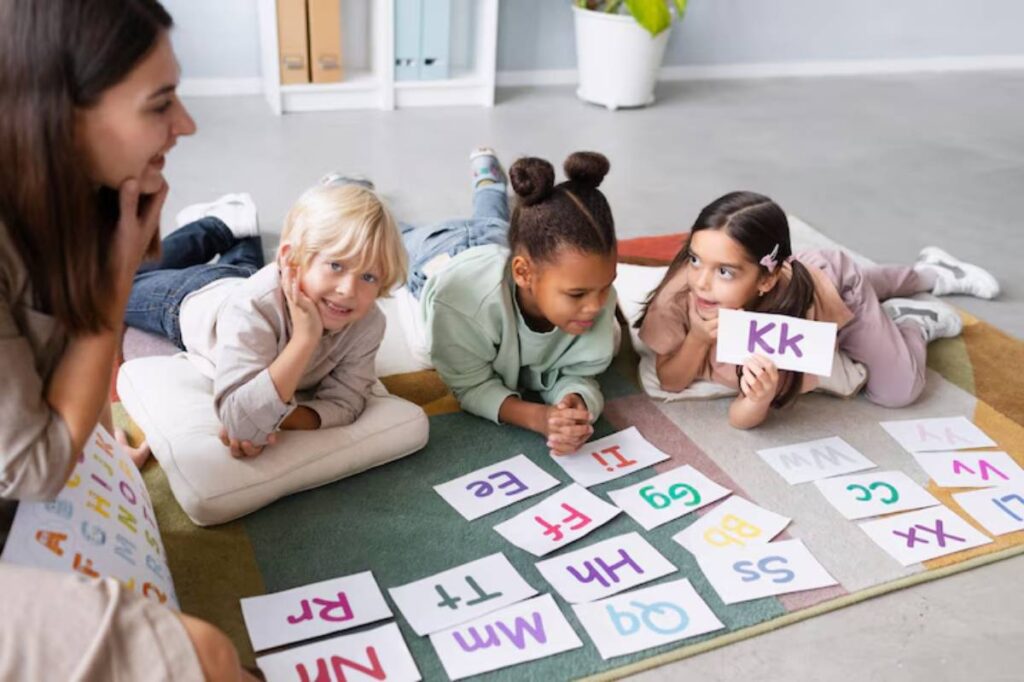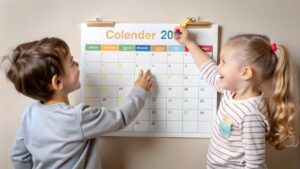The Education Blog

Visual Learners: Homeschool Strategies That Work
Ever had a child stare blankly as you explain a maths concept, only to light up the moment you draw it out? Or maybe they remember a diagram from a book better than anything you’ve said aloud? If this sounds familiar, you may be raising a visual learner — and that’s a powerful thing.
Visual learners thrive on what they can see. They remember faces, love colours and charts, and often enjoy organising things spatially. These kids are picture thinkers — absorbing the world through images, patterns, and structure rather than through sound or touch.
The beauty of homeschooling is that you’re not bound by rigid teaching styles. You can embrace your child’s visual strengths and build a learning style homeschool approach that really works — not just for the curriculum, but for their confidence, too.
This guide dives into what makes visual learners tick, how to teach them effectively, and which resources and strategies will make your visual learning homeschool both smooth and successful.
What Is a Visual Learner?
Seeing is Understanding
A visual learner processes and retains information best when it’s presented through images, diagrams, charts, or spatial formats. They thrive when learning is concrete and visible — not just heard or written.
These learners often:
- Remember faces, scenes, and visuals better than spoken words
- Prefer diagrams, infographics, mind maps, and colour-coded notes
- Excel with written instructions, especially when paired with visuals
- Organise their thoughts using lists or visual cues
Visual learning is one of the most common styles among children. Understanding this preference is a game-changer in creating a personalised homeschool that meets your child where they are — not where the textbook assumes they should be.
How to Tell If Your Child Is a Visual Learner
You likely already have the clues at your fingertips. Watch your child in everyday life and learning situations.
Signs of a Visual Learner:

- Loves drawing or doodling — even during lessons
- Recalls information better when it’s colour-coded or mapped out
- Gets frustrated by long verbal explanations
- Enjoys sorting, organising, and categorising information
- Uses body language and visualisation to understand new ideas
Many visual learners will rework content into their own format — drawing their own chart of the water cycle, or colour-coding their revision notes without being told. They’re not just being “creative” — they’re instinctively doing what works for them.
Why Visual Learners Thrive in Homeschool
Traditional classrooms often rely heavily on auditory instruction — think lectures, verbal questioning, and lots of talking. That can leave visual learners at a disadvantage. But homeschool flips the script.
In your home, you control the pace, the format, and the resources. That means you can lean into your child’s strengths and give them the tools that suit their brain best.
Homeschool Benefits for Visual Learners:
- More flexibility to present content in visual formats
- Less pressure to keep up with auditory-heavy teaching styles
- Customised assessments — think posters, diagrams, and models over written tests
- Creative freedom — space to explore topics through art, layout, or visual storytelling
Visual learners often shine when they’re given the chance to see how ideas connect — and homeschooling is uniquely suited to make that happen every day.
Teaching Strategies for Visual Learning Homeschool Success
Now let’s talk practical. What does it look like to teach your visual learner day to day?
1. Use Visual Planners and Charts
Visual learners love structure. Use weekly visual schedules, colour-coded timetables, or even icons for subjects. This gives them clarity and helps them process routines visually.
For task lists or project planning, try flowcharts or Kanban boards — great for both younger and older learners.
2. Turn Abstract Concepts into Images
Struggling with fractions? Draw them. History timeline a mess? Create a graphic timeline with colours, images, and dates pinned to string on the wall.
Maths, science, and even writing can be taught more effectively when turned into something visual.

- Use maths manipulatives and shape diagrams
- Draw concept maps for essay planning
- Sketch or photograph science experiments step-by-step
3. Use Colour Strategically
Colour isn’t just decorative — it’s functional.
- Highlight key points in colour-coded notes
- Use different coloured folders or tabs per subject
- Organise categories by visual markers (e.g., blue for reading, green for science)
Let them draw it their way — you might be surprised how well it sticks. You can even integrate this into group teaching strategies that work at home, especially if you’re homeschooling more than one child.
4. Embrace Educational Visual Media
When used well, screens can be brilliant tools for visual learners.
- YouTube explainer videos for tricky concepts
- Documentaries or animated series tied to your curriculum
- Apps or platforms with strong visual interfaces (e.g., BrainPOP, Canva, Khan Academy Kids)
Be mindful of balance — but don’t shy away from visual tech when it enhances understanding.
5. Encourage Visual Note-Taking and Mind Mapping
Rather than linear note-taking, let your child try:
- Mind maps with branches, images, and colour codes
- Sketch notes (doodles that help explain what they’ve learned)
- Creating mini posters or visual flashcards on key topics
Let them draw it their way — you might be surprised how well it sticks.
6. Use Picture Books and Illustrated Resources
Even for older learners, well-illustrated books can make abstract or complex topics easier to grasp. For history, science, and even grammar, look for:

- storytelling
- Encyclopaedias with strong image-to-text balance
- Illustrated reference guides
Reading visually makes content more accessible — especially when it’s layered with colour, spacing, and visual flow.
Adapting Common Subjects for Visual Learners
Maths
- Use grids, graph paper, and colour-coded steps
- Apply drawing-based explanations for geometry, fractions, and word problems
- Visualise data through charts, graphs, or even drawing equations as shapes
Science
- Document experiments visually with photos or step-by-step drawings
- Use labelled diagrams for systems (e.g., the body, weather, ecosystems)
- Create visual project boards with real materials and textures
English
- Use story maps, character webs, and comic strip summaries
- Encourage visual brainstorming before essays
- Build grammar walls or colourful cue cards
History and Geography
- Build interactive timelines with pictures and symbols
- Draw maps or recreate settings visually
- Use models, puzzles, and collage storytelling
Managing Challenges Visual Learners May Face
Despite their strengths, visual learners can still hit roadblocks — especially if learning feels too text-heavy or abstract.
Common Struggles:
- Struggling with long verbal instructions
- Difficulty retaining information presented only through audio
- Getting distracted in cluttered or visually noisy environments
How to Help:
- Supplement text with visual cues
- Offer written or visual summaries after oral instruction
- Create a calm, decluttered space with clear visual organisation
Sometimes, simple tweaks — like using icon-based reminders or a labelled desk layout — can make a huge difference.
Helping Your Visual Learner Build Independence
As your child gets older, it’s vital they learn how to use their visual strengths to study and organise themselves independently.
Skills to Encourage:
- Creating their own revision cards or visual study guides
- Designing planners or visual checklists
- Using tools like Canva to build presentations or reports
All of these not only support learning but prepare them for long-term self-management — a valuable life skill.
You can also include this approach in your homeschool portfolio for reviews or colleges, where visual projects can serve as meaningful evidence of progress and understanding.
Let Them Learn in Colour, Shape, and Light
Visual learners don’t just see better — they think in pictures, patterns, and perspectives. That’s not just a quirk. It’s a strength — and in a homeschool setting, it can become their superpower.
By recognising and respecting your child’s learning style, you unlock their full potential. You make lessons clearer, more engaging, and, most importantly, more joyful.
So try it — draw the history timeline, colour-code the maths workbook, build a visual vocabulary wall. Watch how their eyes light up. You’re not just teaching them the subject — you’re teaching them how they learn best.
And that? That’s the kind of education they’ll carry with them forever.









